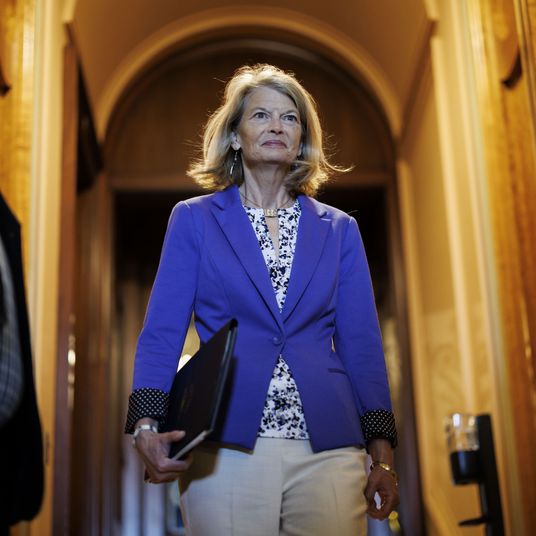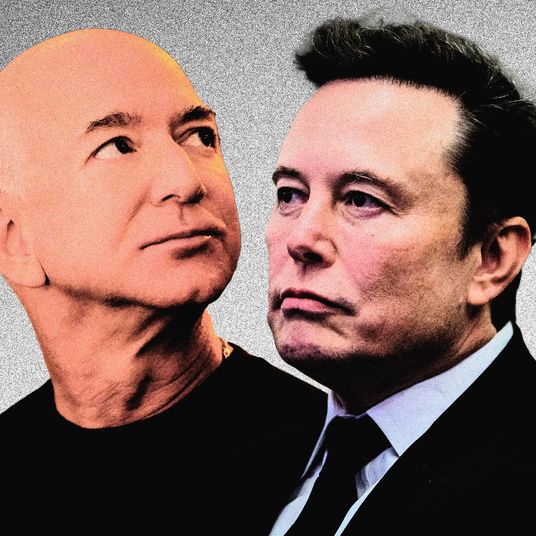
There are quite a few categories of people who have reason to fear Donald Trump’s policy agenda for 2025, which he can be expected to pursue via a combination of executive actions and legislation (the latter made possible by Republican “trifecta” control of the White House and both congressional chambers). Most obviously, there are the undocumented immigrants being threatened with “mass deportation”; the federal employees who could lose their civil-service protections; women whose reproductive rights will almost certainly be limited by regulatory actions, particularly with respect to the distribution of abortion pills; and various “enemies of the people,” from prosecutors to pundits, who could face legal harassment or worse.
Those who depend on the federal government’s social safety net for survival are less explicitly, but quite definitely, at major risk thanks to the horrific fiscal arithmetic of Trump’s agenda, magnified by the Republican Party’s long-standing hostility to federal programs providing health care and other key assistance to low-income individuals and families. As the GOP’s legislative plans begin to come into focus, there are four major ways low-income people could be impacted.
.
A day of reckoning on debts and deficits has arrived.
It’s true that Republicans care most about debts and deficits when Democrats are in charge of the federal government; the GOP happily colluded in red-ink budgeting during Trump’s first term as president. But there are limits to what even the most hypocritical of conservatives can accept, particularly when it’s possible to look fiscally tough by pursing austerity policies many Republicans favor anyway. The most immediate reason for paying attention to the fiscal condition of the country is the end of the debt-limit suspension enacted in 2023, which will occur on January 2, 2025. The U.S. Treasury will be able to utilize “extraordinary measures” to avoid breaching the debt limit for a while, but without question, the day of reckoning will arrive during the first year of the new Trump-GOP regime. Presumably, a debt-limit measure will be nestled in some sort of must-pass legislation, but members of Congress from both parties will be reluctant to support it. So deficit-reduction rhetoric (and proposals) will be in the air constantly, with increasingly unsubtle encouragement from financial markets.
Aside from the hard realities of unsustainable red ink, Republican deficit hawks could have considerable leverage, given the GOP’s tiny margin of control (with five uncalled House races still in play, the best guess is that Mike Johnson will have a four-seat majority complicated further by vacancies). Much of the House Freedom Caucus has been on the verge of a nervous breakdown over domestic spending levels ever since Republicans took over the House in 2023. Yes, they are likely to bend to Trump’s wishes, but aside from protecting his own spending priorities, there’s no reason to believe the 47th president will have any problems with right-wing demands for draconian cuts in federal programs and services he does not prioritize. He’s promised to protect Social Security and Medicare and wants to boost defense spending, but that just adds more pressure on the rest of the federal budget.
.
Trump’s tax cuts will require massive spending offsets.
The new administration will obviously make the extension of the high-end tax cuts (officially known as the Tax Cuts and Jobs Act) enacted in 2017 that were the crown jewel of Trump’s first year in office an extremely high priority, and congressional Republicans are eager to make that job one. This will almost certainly be attempted via a budget reconciliation bill, a process that makes it possible for a party enjoying a trifecta to enact major packages of legislation on a party-line vote without fear of a Senate filibuster (it’s how the Trump tax cuts were originally enacted and also how Democrats passed both the 2021 stimulus bill and the 2022 Inflation Reduction Act). Because reconciliation was originally designed as a way to reduce budget deficits, using it to slash revenues requires either a relatively early expiration date (which is why the Trump tax cuts need to be extended) or offsetting cuts in spending.
According to the conservative-leaning Tax Foundation, which assumes tax cuts boost the economy (which means “dynamic scoring” reduces their impact on the deficit), keeping Trump’s tax-cut promises will be wildly expensive:
Trump and congressional Republicans aim to extend the TCJA’s temporary provisions, which expire after 2025.
We estimate permanence for the individual, business, and estate provisions would add about $4.25 trillion to the deficit from 2025 to 2034 on a conventional basis. On a dynamic basis, including economic growth effects, the cost drops to $3.59 trillion—meaning economic gains offset 16 percent of the cost. …
On top of TCJA permanence, Trump proposed lifting the cap on the state and local tax (SALT) deduction, exempting tips and overtime pay from income tax, exempting Americans abroad from income tax, allowing auto loan interest to be deductible, and lowering the corporate tax rate to 15 percent for domestic production. …
In total, if Trump’s tax cut proposals were pursued fully in reconciliation, the conventional revenue loss would be about $6.7 trillion from 2025 to 2034. … The dynamic score would be about $500 billion lower.
The biggest offset to these costs Trump has specified is the repeal of Biden’s green-energy tax credits. But some of these credits are very popular among congressional Republicans, and that would save at most $921 billion over ten years, a fraction of the tax-cut costs. Trump has also talked about financing his agenda through massive tariffs, but those will have to be enacted by Congress as well; there is significant Republican resistance, and this step would probably only occur down the road after negotiations with other countries to secure trade concessions. Additionally, Trump’s announced scheme is to use tariffs to enable much deeper tax cuts — or even the abolition of income taxes — down the road.
Any way you slice it, paying for Trump’s deficit-boosting tax agenda will require massive spending offsets, more than likely in the same reconciliation bill that keeps his revenue promises. And that’s completely aside from the budget pressure that new spending commitments from Trump will generate. He’s recently said that there’s “no price tag” he is unwilling to pay to implement his plans to deport immigrants.
.
Republicans are itching to cut programs aimed at low-income people.
Republicans lost their last governing trifecta in the 2018 midterm elections. But during the Biden administration, aside from opposing Democratic spending proposals, they regularly proposed deep cuts in spending that would benefit low-income Americans.
The liberal Center for Budget and Policy Priorities took a close look at a recent budget proposal from the House Republican Study Committee (to which a majority of House Republicans belong) and noted the obvious pattern:
[T]he RSC budget calls for $4.5 trillion in cuts over ten years in Medicaid, the Children’s Health Insurance Program (CHIP), and Affordable Care Act (ACA) marketplace coverage, cutting these health coverage funds by more than half. …
Similarly, the RSC budget calls for cutting average Supplemental Nutrition Assistance Program (SNAP) benefits by about 22 percent. …
The RSC budget … includes a cut that would convert Supplemental Security Income (SSI), a 50-year-old program that provided income assistance to 7.5 million low-income seniors and disabled people in 2022, to a block grant and end guaranteed cash aid through the program.
.
Republicans are signaling that they’ll target Obamacare and Medicaid again.
The most immediately relevant sign of impending peril to low-income programs is what happened last time Trump and his party enjoyed a trifecta. In 2017, a small band of Senate Republicans stopped enactment of a budget reconciliation bill that would have repealed Obamacare and gutted Medicaid by radically ratcheting down the federal commitment to the program, in the process denying an estimated 23 million Americans health coverage.
House Speaker Mike Johnson has made it abundantly clear that the GOP wants to return to that huge piece of unfinished business and get it done. And for all his voter-pleasing campaign promises to protect Social Security and Medicare and shower new benefits on selected demographic groups, Trump has never extended his beneficence to other federal health-care programs or low-income assistance generally. The man who never admits failure is certain to make another run at Obamacare and Medicaid, particularly given the dire fiscal math that makes any other course of action all but impossible.
More on politics
- Trump Cabinet Picks: Everyone He’s Announced So Far
- The Menendez Brothers and the End of the Progressive Prosecutor
- What Are RFK Jr.’s Plans as HHS Secretary for Trump?





























